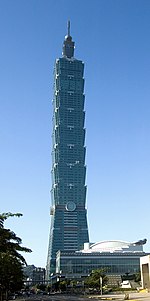Abstract
This article presents an overview of green building economics and policies through a survey of theoretical and empirical evidence concerning green building practices. We define green building policy as policies that affect the entire life of the building, from design and construction to operation and deconstruction. We examine the economics of green buildings in the United States, with particular emphasis on market failures in the building sector such as information problems and externalities. We also discuss how policy instruments are used to address these market failures. We present original data on the types and potential impacts of these policy instruments in the United States, along with a brief review of international green building programs. We conclude by describing challenges for the empirical study of green buildings and priorities for future research and policy in this area.
...
A number of studies have found empirical evidence of financial benefits for building owners. For example, Eichholtz, Kok, and Yonder (2012) find that real estate investment trusts (REITs) that have a larger percentage of LEED-certified properties in the portfolio have a higher value and lower price volatility than REITs with a lower percentage of LEED-certified properties. Deng and Wu (2013) find that Green Mark–certified properties in Singapore command a 9.9 percent premium in the resale market, but that initial transactions command a premium of only 4.4 percent, suggesting that green certification may reduce information asymmetries in the resale market. Chegut, Eichholtz, and Kok (2014) show that buildings in the United Kingdom that are certified according to the BRE Environmental Assessment Method rent for longer contracts and at a 28 percent rental premium. They also find that green certification provides a higher premium for rental properties than for properties that are for sale, highlighting the role of certification in reducing information asymmetries and providing a low-cost way for prospective tenants to judge the overall quality of a property.
 |
| https://en.wikipedia.org/wiki/Green_building |
Interestingly, the financial value of green buildings does not appear to be limited to operational costs. Eichholtz, Kok, and Quigley (2013) find a premium for the sustainability certification, in addition to energy use certifications. Similarly, Reichardt (2014) finds that the price premium for LEED buildings exceeds the value of its lower operating expenses, suggesting a premium for “sustainability” or market advantages that goes beyond reduced operating expenses. Note that Chegut, Eichholtz, and Kok (2014) find that market premiums on green building certification deteriorate as more nearby buildings certify, indicating that late adopters will gain less premium for certification.
...
by Daniel C. Matisoff*, Douglas S. Noonan† and Mallory E. Flowers‡
*Associate Professor, School of Public Policy, Georgia Institute of Technology, 685 Cherry Street NW, Atlanta, GA 30332; Telephone: 404-385-2623; Fax: 404-385-0504; e-mail: matisoff@gatech.edu.
†Professor, School of Public and Environmental Affairs, Indiana University Purdue University–Indianapolis, 801 West Michigan Street, BS 4037, Indianapolis, IN 46202; Telephone: 317-278-2448; Fax: 317-274-7860; e-mail: noonand@iupui.edu.
‡Doctoral Student, School of Public Policy, Georgia Institute of Technology, 685 Cherry Street NW, Atlanta, GA 30332; Telephone: 404-385-3082; Fax: 404-385-0504; e-mail: mflowers8@gatech.edu.
Review of Environmental Economics and Policy http://reep.oxfordjournals.org
Volume 10, Issue 2; Summer, 2016; pages 329-346.
First published online: August 23, 2016
No comments:
Post a Comment